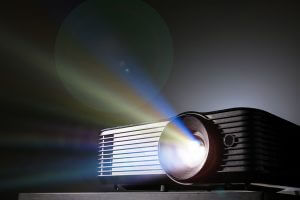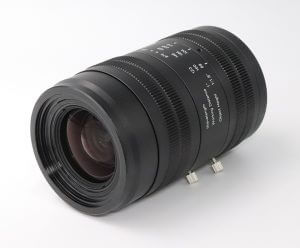Posted on: Tuesday, October 11th, 2022 In: Learning Optics with Austin
Projection lenses are another common application of optics. They differ from microscope lenses in that microscope lenses magnify what the human eye cannot see. Rather than zooming into an image, projection lenses enlarge the sample and PROJECT it. Just as with microscope objectives, there are certain design factors that must be taken into consideration when creating a projection lens. One of these factors is the conjugate distance which is the length between the sample and the image (calculated by sample – image distance). The projector at an IMAX movie theater would have a very different conjugate distance than a classroom projector!

Projector
Another factor to consider in designing is magnification. The magnification for a projection lens is calculated by dividing the image size by the sample size. Thus, the larger the image is “blown up”, the greater the magnification. The strength of the light source is also positively correlated with magnification- the higher the magnification, the more light is needed. And just like microscope objectives, the working distance is also taken into consideration when designing projection lenses. Focal length, field of view, and relative aperture are also key characteristics of projection lens design.

Zoom Lens
Zoom lenses have a unique characteristic where the focal length of the lens is adjustable in a range. Changing the focal length changes the field of view of the system. This is a useful property in capturing scenes at different distances and different ranges.
